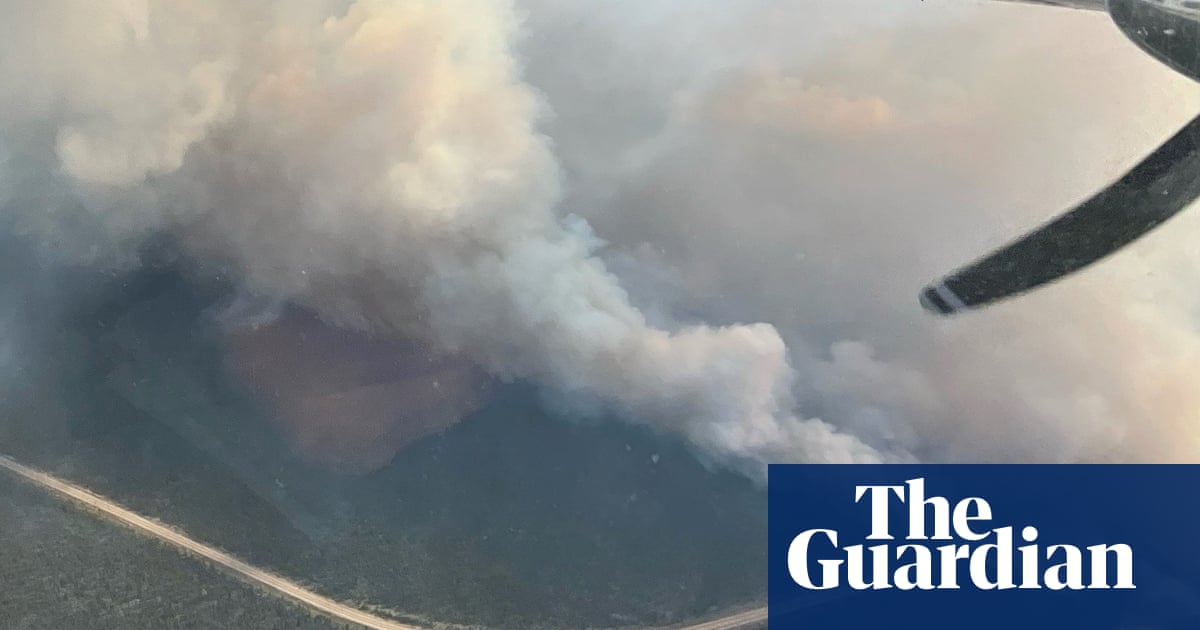A fast-moving wildfire has hit the resort town of Jasper, in the Canadian Rockies’ largest national park, causing significant damage and forcing thousands of residents and tourists to flee.
Jasper national park officials said the fire entered the southern edge of the town on Wednesday evening and crews were battling multiple structural fires and working to protect key infrastructure. There were significant losses in some areas, they said.
Justin Trudeau, the prime minister, said on Thursday that his government had approved Alberta’s request for federal assistance, adding that it was deploying military resources and evacuation support, as well as co-ordinating firefighting and airlift assistance.
“Alberta, we’re with you,” Trudeau posted on the social media platform X.
Forest firefighters and others without self-contained breathing apparatus were told to evacuate to the nearby town of Hinton, with structural firefighters staying behind.
The Parks Canada spokesperson James Eastham told reporters outside Jasper that the town is filled with smoke and there “has been structural loss”.
“At this point, I can’t confirm how many, locations or specific structures. The fire continues to burn,” he said.
Parks Canada said firefighters are working to save “as many structures as possible and to protect critical infrastructure, including the wastewater treatment plant, communications facilities, the Trans Mountain pipeline and others”.
On X, the account for the Fairmont Jasper Park Lodge said the flames had reached the hotel’s grounds, but the extent of damage, if any, is not yet known.
A few hours earlier, many first responders were ordered out of Jasper national park for their safety.
Jasper is being hit by fires from the north and south, and the town’s 5,000 residents – along with 20,000 more park visitors – fled on short notice late Monday night when the fires first flared.
Alberta premier, Danielle Smith, said she was “heartbroken”.
A record number of wildfires in 2023 forced more than 235,000 people across Canada to evacuate and sent thick smoke into parts of the US, leading to hazy skies and health warnings in multiple cities.
The northern fire was spotted 5km (about 3 miles) from Jasper earlier on Wednesday. The southern fire had been reported 8km (about 5 miles) away from the town, but Katie Ellsworth, of Parks Canada, said strong gusts swooping in sent it racing and fire perimeters changed minute by minute.
Ellsworth said bucketing efforts by helicopter failed. Crews using heavy equipment to build fireguards could not complete the work before having to pull back for safety, and water bombers were unable to help due to dangerous flying conditions.
after newsletter promotion
A last-ditch effort to use controlled burns to reroute the fire to natural barriers like Highway 16 and the Athabasca River failed due to “unfavourable conditions”.
The hope was that rain forecast overnight would bring some relief.
Ellsworth said the decision to relocate all first responders to Hinton, just outside the eastern edge of the park, “has not been made lightly”.
She said: “Given the intensity of fire behaviour being observed, the decision has been made to limit the number of responders exposed to this risk.”
The United Nations designated the parks that comprise the Canadian Rockies, including Jasper, a world heritage site in 1984 because of its striking mountain landscape.
Residents and visitors streamed out by the thousands late Monday and Tuesday, and officials said Wednesday the evacuation of the town of Jasper was complete.
Alberta has been baking under scorching temperatures that have already forced another 7,500 people out of remote communities. About 177 wildfires were burning across the province.
Leanne Maeva Joyeuse, who lives in Jasper, was relieved but exhausted after reaching the Grand Prairie evacuation centre following 20 hours on the road with her grandmother, parents and younger brother.
“We’re just waiting to go back home and see how many days we’re going to be stuck here,” Joyeuse said.
